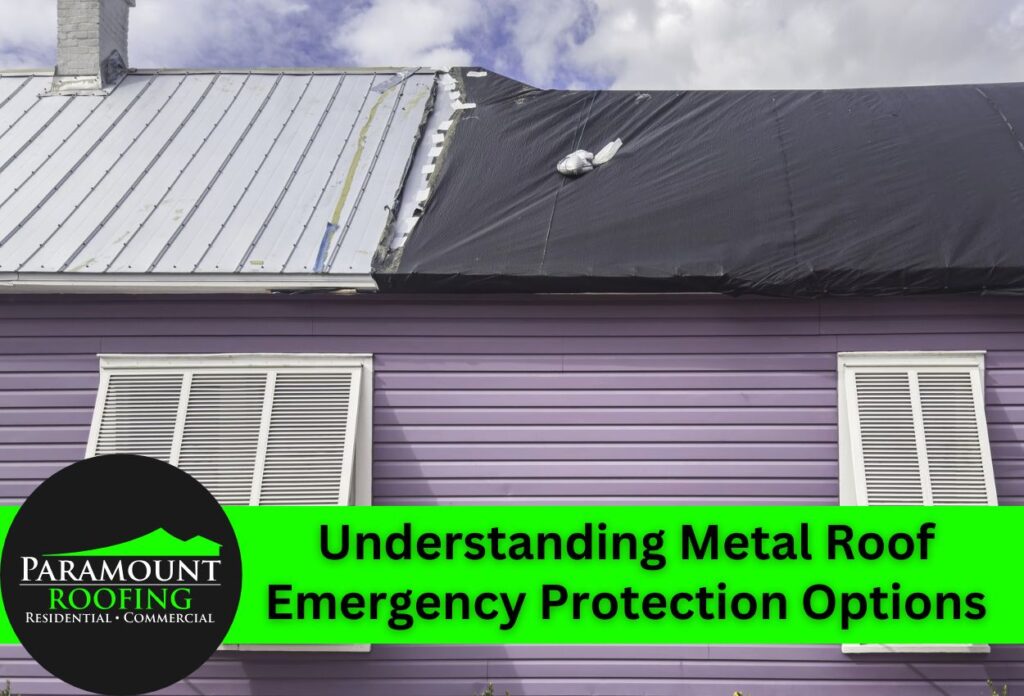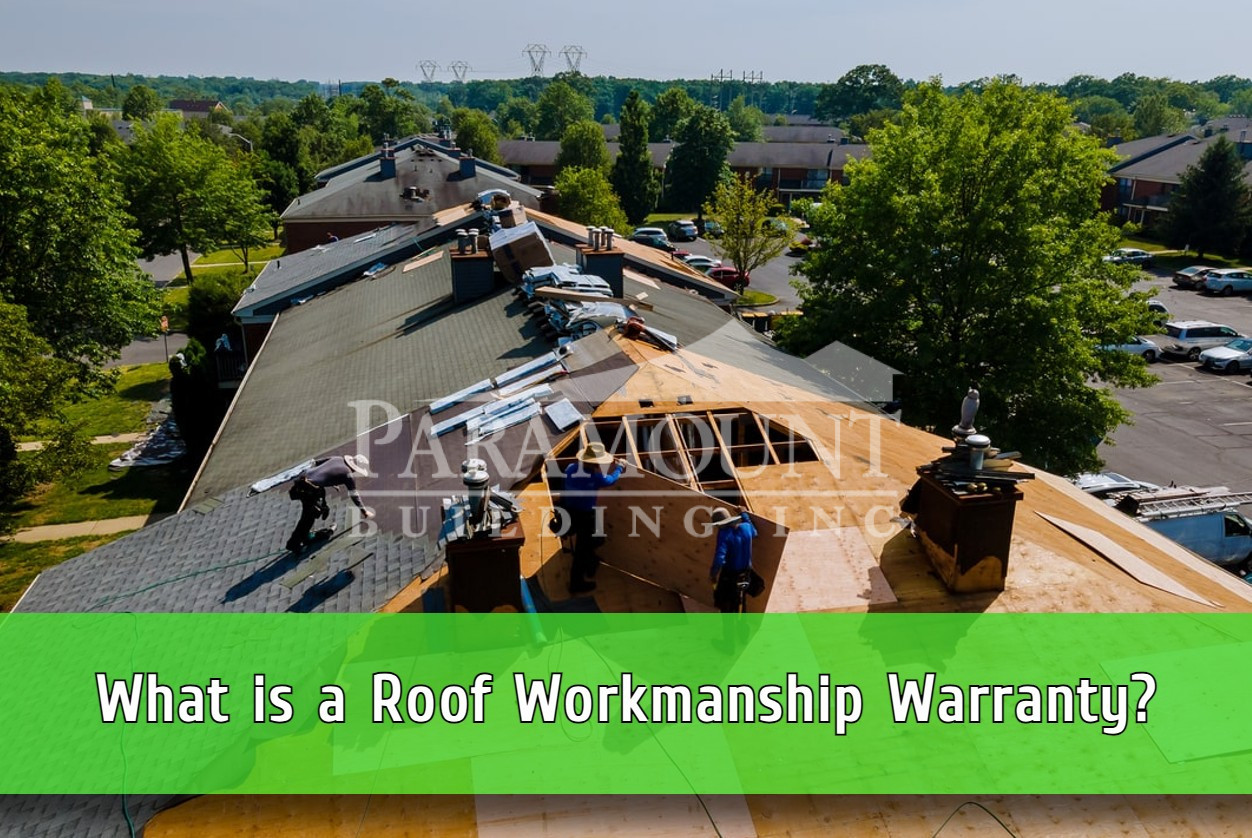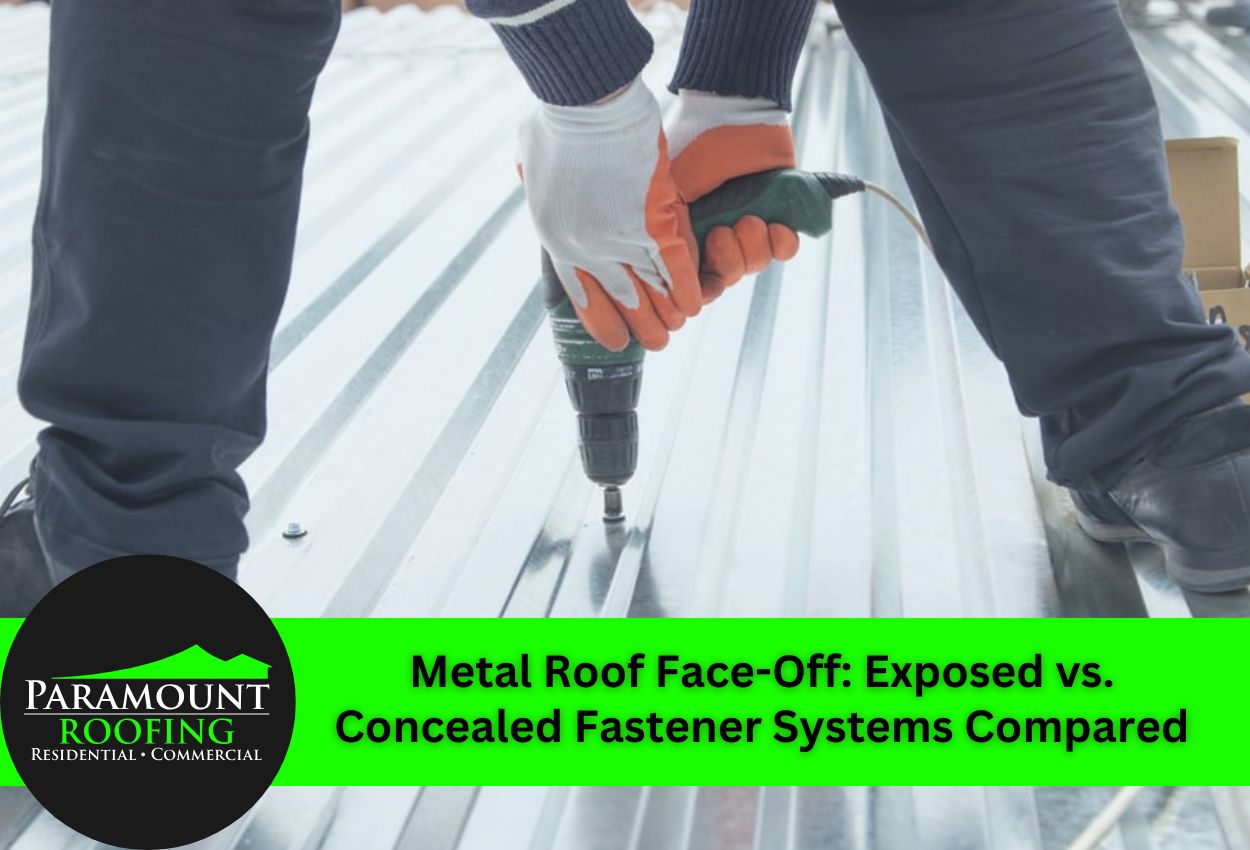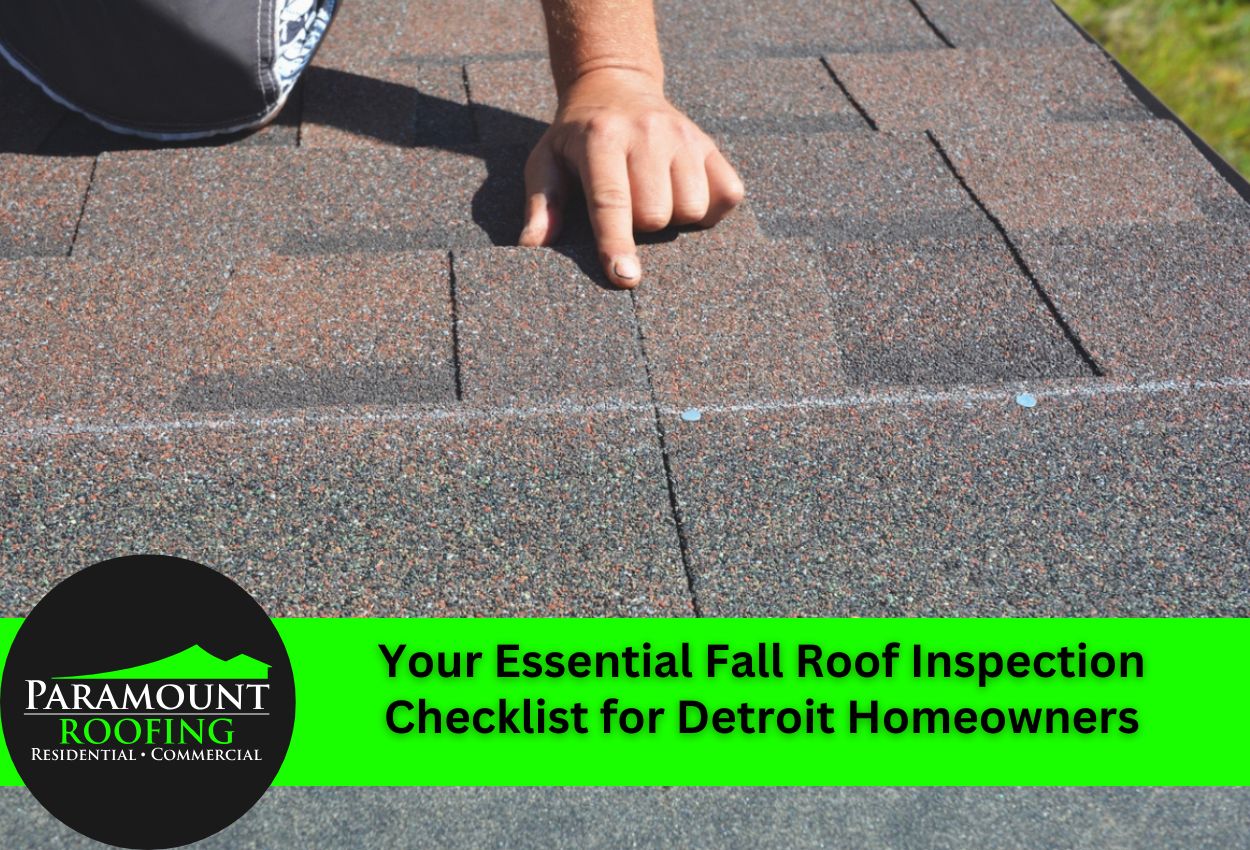
Metal roofs are known for their durability and longevity, but they aren’t immune to damage from severe weather events, falling debris, or unexpected accidents. When damage occurs to your metal roof in the Detroit area, acting quickly is essential to prevent leaks and additional structural problems. One common question homeowners ask is whether tarping, which is a temporary but widely used method for asphalt shingle roofs, works effectively on metal roofing systems.
The unique design of metal roofs presents specific challenges when attempting emergency protection. Unlike traditional shingles, metal panels are smooth, often have fewer attachment points, and react differently to temperature changes. These characteristics require specialized approaches when implementing temporary protection measures after damage occurs.
Tarping a metal roof is possible, but it requires proper techniques to be effective. Improper installation can lead to additional damage or leave your home vulnerable to water infiltration despite your best efforts.
Understanding how to secure tarps correctly on metal surfaces, what materials work best, and when tarping is appropriate versus when immediate professional repair is necessary are all critical factors in protecting your investment.
When Tarping a Metal Roof is Necessary and Appropriate
Metal roofs typically stand up to severe weather better than other roofing materials, but certain situations demand immediate emergency protection. After powerful storms strike the Detroit area, metal roofs may experience puncture damage from falling branches, lifted or displaced panels from high winds, or compromised seams and flashing. These vulnerabilities create entry points for water that can quickly lead to interior damage, making temporary tarping necessary until professional repairs can be arranged.
Tarping becomes particularly crucial when damage occurs during extended periods of harsh weather. If your metal roof begins leaking during a multi-day rain event or during Michigan’s snowy winter months, temporary protection prevents continuous water infiltration while you await professional assessment.
Regarding a timeframe, a properly installed tarp can typically protect a metal roof for 30 to 90 days, depending on weather conditions and installation quality. However, tarps should never be considered a permanent solution. The UV exposure, temperature fluctuations, and repeated stress of wind common in Michigan weather will deteriorate even the highest quality tarps over time.
Remember that metal roofs have specific repair requirements that differ from asphalt shingles. While tarping provides crucial temporary protection, scheduling professional repairs with experienced metal roofing contractors should be your immediate next step to preserve your roof’s integrity and warranty status.
Essential Materials and Safety Precautions for Metal Roof Tarping
When preparing to tarp a damaged metal roof, having the right materials is important for effective protection. For metal roofs, heavy-duty polyethylene tarps (minimum of 6-mil thickness) offer the best combination of durability and waterproof protection. These tarps should be at least 2 to 4 feet larger than the damaged area on all sides to ensure it’s properly covered and water can flow off easily.
Unlike with shingle roofs, a metal roof will use different fastening materials to hold the tarp in place. Avoid puncturing undamaged metal panels whenever possible. Instead, use specialized magnetic tarp holders, metal-compatible adhesive tape systems, or secure the tarp to surrounding structural elements. When perimeter fastening is necessary, use 2×4 lumber wrapped in the tarp edges secured with rope or ratchet straps rather than driving screws directly into good metal panels.
If you’re installing the tarp yourself, you must pay particular attention to safety. Metal surfaces become extremely slippery when wet or frost-covered, significantly increasing the risk of falling. Always use OSHA-approved fall protection equipment, including harnesses and anchors, when working on a metal roof. Never attempt tarping during thunderstorms or when power lines are damaged near the roof area.
Detroit homeowners should also be aware that metal roofs can reach dangerous temperatures during sunny weather. Schedule work during cooler morning hours and wear heat-resistant gloves and footwear with appropriate grip for metal surfaces to prevent burns and slips.
Common Metal Roof Tarping Mistakes to Avoid
Even with the best intentions, many Detroit homeowners make critical errors when attempting to tarp damaged metal roofs. One of the most frequent mistakes is directly screwing or nailing tarps into undamaged metal panels. This not only creates new entry points for water, but it also damages the protective coating that prevents corrosion, potentially leading to premature roof failure long after the initial damage is repaired.
Another common error is using tarps that are too small or improperly positioned. Metal roofs channel water differently than asphalt shingles, so tarps must extend well beyond the damaged area and be positioned to work with, not against, the roof’s natural drainage patterns. Many homeowners also underestimate Michigan’s wind patterns, using insufficient securing methods that allow tarps to flap, tear, or completely detach during storms.
Perhaps most concerning is how improper tarping can affect your insurance coverage and manufacturer warranties. Many metal roof warranties specifically prohibit unauthorized modifications or temporary repairs that damage the roofing system. Insurance companies may also deny claims if they determine that improper tarping techniques contributed to additional damage rather than preventing it.
Professional roofing contractors understand these risks and use specialized methods that protect your roof without compromising its integrity. When facing metal roof damage, consulting with experienced metal roofing specialists before attempting DIY tarping can save you from expensive mistakes and warranty complications.
Maintaining Your Tarped Metal Roof During the Waiting Period
Once your metal roof has been properly tarped, regular maintenance becomes essential to ensure continued protection while you wait for permanent repairs. Establish a weekly inspection routine, especially after severe weather events. During this inspection, look for tears developing along stress points or water pooling that might compromise a tarp’s protective abilities. Pay particular attention to the edges and corners where wind typically causes the most movement.
During Michigan’s unpredictable weather patterns, you may need to make adjustments to maintain protection. If high winds loosen sections of the tarp, reinforce these areas using additional securing methods like extra magnetic holders or tightening existing straps. For extended waiting periods, consider applying a second tarp layer over the first if signs of UV deterioration appear, rather than removing and replacing the original protective layer.
Keep debris off the tarp in order to prevent punctures and leaks. Branches, leaves, and other materials can trap moisture against the tarp and accelerate deterioration. After heavy snowfall, you should also carefully remove snow from tarped sections in order to prevent excessive weight that could affect both the temporary protection and the damaged metal roof beneath.
Remember that even the best temporary tarping solution has limitations. While maintaining your tarp extends its effectiveness, scheduling professional metal roof repairs with qualified contractors remains the main way to restore your roof’s integrity and protect your home.
Professional Metal Roof Repair Solutions in Detroit
While temporary tarping provides essential protection for damaged metal roofs, there comes a point when professional intervention becomes necessary. Watch for warning signs that your DIY tarping solution is no longer sufficient, such as persistent leaks despite tarping, visible sagging of the metal panels, rust development around damaged areas, or tarps that repeatedly fail regardless of proper installation. These indicators suggest underlying structural issues that require expert attention from qualified metal roofing specialists.
When you call a professional metal roofing contractor in Detroit, expect a thorough assessment process designed for our unique weather. Experienced technicians will evaluate both the immediate damage and potential secondary issues that may have developed since the initial incident. They’ll inspect for hidden moisture trapped between panels, examine flashing and seams that may have been compromised, and assess the structural integrity of your roof’s decking and support system.
Professional metal roof repairs in Michigan typically involve specialized equipment and techniques unsuitable for DIY approaches. From custom-fabricated metal panels that match your existing roof to seam sealing methods designed to withstand our freeze-thaw cycles, professional solutions offer longevity that temporary tarping cannot provide. Many Detroit area contractors also apply protective coatings as part of the repair process, enhancing your metal roof’s weather resistance and extending its lifespan after repairs are complete.
Remember that professional repairs not only address immediate damage but also help maintain your manufacturer’s warranty coverage and provide documentation for insurance claims.
Professional Metal Roof Repair Solutions in Detroit
If you’re facing severe metal roof damage in Detroit and wondering, “Can you tarp a metal roof?” the answer is yes, but it’s often a temporary fix. For homeowners dealing with storm damage or leaks, it’s crucial to move quickly from temporary tarping to professional repairs in order to prevent further deterioration. Luckily, our team at Paramount Roofing specializes in durable, professional metal roof repairs tailored to withstand Michigan’s unique weather challenges.
Don’t wait for a small leak to become a large, expensive problem. Call Paramount Roofing today at (586) 690-0227 for reliable metal roof repair services that you can trust.
 Free Estimate
Free Estimate
 Request Service
Request Service Locations
Locations 



